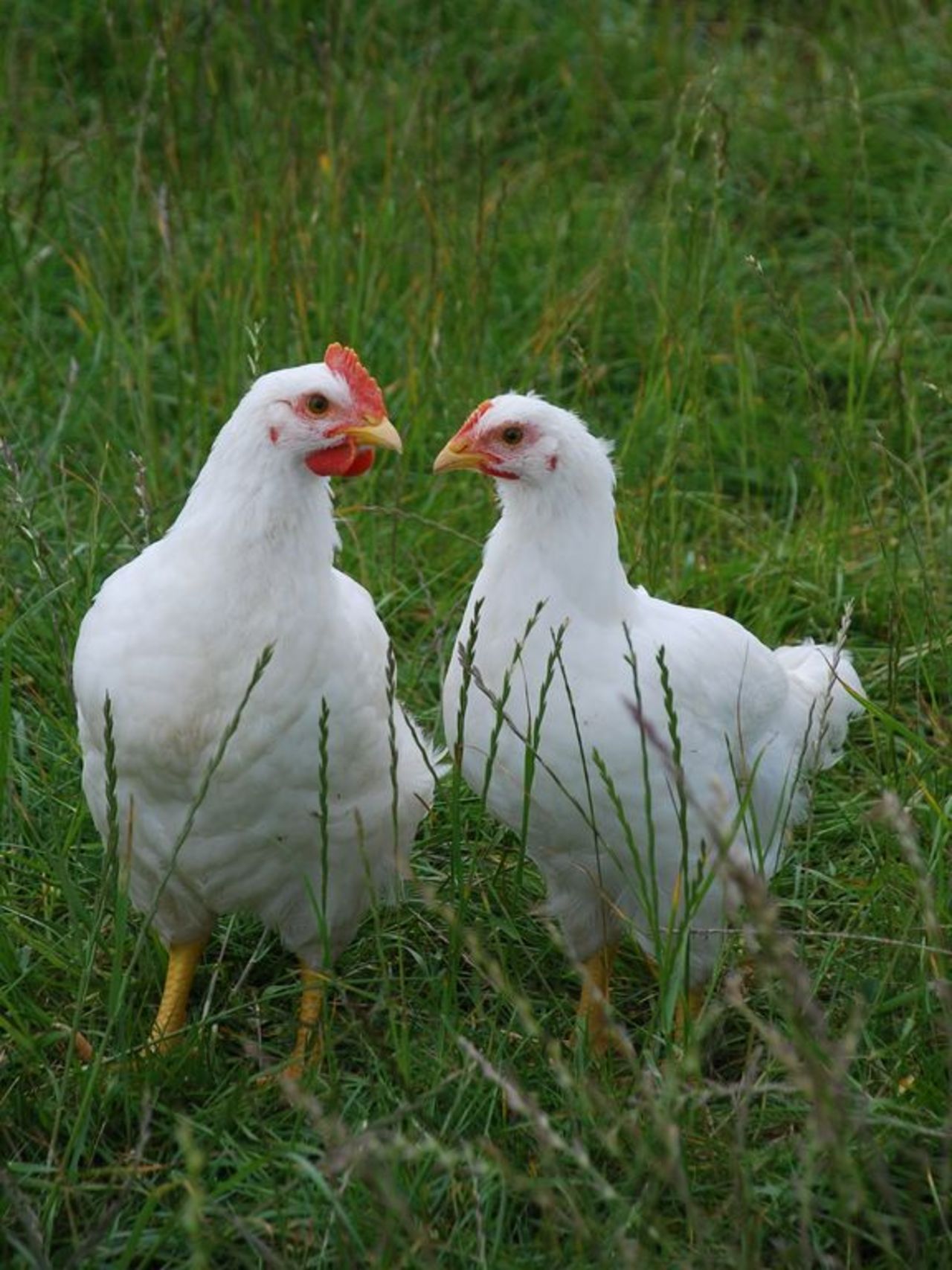Project
Pilot study with germinated vetch seeds fed to laying hens

How well do laying hens accept germinated vetch seeds as feed, and how much do they consume?
Common vetches produce protein-rich seeds, which contain not only valuable nutrients but also anti-nutritive compounds. Laying hens react especially sensitive to them and avoid consuming higher amounts. A pilot study at the Thünen-Institute of Organic Farming explores if germination before feeding makes common vetch seeds an attractive feed.
Background and Objective
Because of their positive influence on soil fertility, legumes like peas or common vetch (Vicia sativa L.) are an important component of the crop rotation in organic agriculture. In cultivation trials at the Thünen-Institute of Organic Farming, common vetch cultivated in mixed cropping with oats showed a good yield stability, see project „Peas, lupins and partners in field trials“. The protein-rich common vetch seeds can be used as feed for cattle and other ruminants, but poultry and pigs are sensitive against the anti-nutritive compounds present in the seeds. However, from trials with other grain legumes we know that germinating the grains before feeding decreases the anti-nutritive compounds. Therefore this project focuses on the question if common vetch seeds can be processed into an attractive feedstuff for laying hens by germinating them before feeding.
Approach
Germinated vetch seeds are offered to laying hens in addition to their usual feed to see if they consume them. If the germinated vetch seeds are consumed, the offered quantity will be increased to see how much the hens consume. Apart from the quantities of feeds that are offered and that are not consumed, the usual parameters of laying performance are documented.
Results
Common vetches were best accepted when germinated in combination with wheat (50:50). During the last, 7-week long phase of the pilot study, offering this mixture to the experimental group had no influence on total feed intake of the hens. The germinated feed replaced an average of 20 % (dry matter basis) of the usual layer feed, but neither affected laying performance nor live weight of the hens. The lack of negative effects on animal performance highlights the potential of germination as a means to increase the use of vetches in feeding of laying hens, and should be further studied.
Involved Thünen-Partners
Duration
10.2015 - 12.2016
More Information
Project status:
finished
Publications
- 0
Baldinger L (2017) Akzeptanz einer gekeimten 50:50 Saatwicken:Weizen Mischung als Futtermittel für Legehennen. In: Wolfrum S, Heuwinkel H, Reents HJ, Hülsbergen KJ (eds) Ökologischen Landbau weiterdenken - Verantwortung übernehmen, Vertrauen stärken : Beiträge zur 14. Wissenschaftstagung Ökologischer Landbau, Freising-Weihenstephan, 7. bis 10. März 2017. Berlin: Köster, pp 614-615
- 1
Baldinger L (2016) Getreidekeime für Hühner. Bio Land(3):24-25
- 2
Böhm H, Weissmann E (2013) Anbautelegramm Saatwicke (Vicia sativa L.). KTBL Heft 100: 34

![[Translate to English:] [Translate to English:]](/media/_processed_/8/e/csm_Bildschirmfoto_2021-03-03_bearb_fc48ac88bf.jpeg)
![[Translate to English:] [Translate to English:]](/media/_processed_/8/e/csm_Bildschirmfoto_2021-03-03_bearb_ba3ec0e9d7.jpeg)

![[Translate to English:] Logo des Bundesministerium für Ernährung und Landwirtschaft](/media/allgemein/logos/BMEL_Logo.svg)